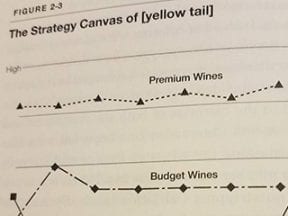For nearly 100 years retail merchandisers have used the five R’s framework or a variation to design, select, and display products. The concept is valid for ecommerce shops today.
“It is the responsibility of the merchandise division to provide for the consumer merchandise of the right style and quality, in proper quantities, at the right price, and at the right time,” wrote Paul M. Mazur of Lehman Brothers in his 1927 book, “The Principals of Organization Applied to Modern Retailing.”

The five R’s of retailing — a 100-year-old concept — applies to modern-day online sellers.
5 R’s of Retailing
Mazur’s descriptions have evolved into what some call the five R’s of retailing.
- The right people.
- The right product.
- The right quantity.
- The right price.
- The right time.
The phrase “provide for the consumer” became “the right people.” “The right style and quality” are “the right product.” “Proper quantities” became “the right quantity.” “The right price” and “the right time” are direct quotes.
Right people. “The right people” can mean knowing your customers — demographics, psychographics, buying habits, politics, and pain points. This understanding allows ecommerce businesses to tailor their product selection, prices, promotions, and overall customer experience.
Here’s an example. Imagine a business that sells second-hand apparel to vegans. The company’s niche might be verifying or even certifying that a specific, decades-old garment was manufactured in such a way to appeal to that audience.
That focus would impact the products, description, and promotions.
It reminds me of the book “Blue Ocean Strategy,” wherein authors W. Chan Kim and Renée Mauborgne argue that a business should focus on creating a “blue ocean” of untapped market space rather than fighting for a share of a crowded “red ocean” market.
How does your ecommerce business ensure it has the proper customers — the right people?
Right product. “The right product” refers to selecting and offering profitable goods the customers will appreciate.
“The right product” for retail ecommerce meets margin targets, sells at an acceptable inventory turnover rate, fits with the retailer’s existing products, and comes from a trustworthy and reliable supplier. The whole package makes for a successful product.
For direct-to-consumer brands, “the right product” can be more complicated since it will include design, components, and manufacturing.
Right quantity. “The right quantities” addresses the proper inventory level at warehouses near likely customers.
This is not guesswork. A well-merchandised ecommerce business will use inventory tracking data, sales info, warehouse cost analysis, and other tools or models to identify how much of a given product to keep on hand at a specific location.
For example, a merchant would presumably not stock dehumidifiers in Arizona, an arid, dry climate.
Finally, having the right quantity of products likely requires flexibility to adapt to changes in demand.
Right price. A pricing strategy typically varies based on the size of the business. Owners or managers of small companies often set every price manually using a basic formula or intuition.
But enterprise businesses usually follow a complicated pricing model.
Regardless, the idea is to establish systems for setting regular and discounted prices for products, customer segments, and timeframes.
Right time. Most consumers will pay more for an umbrella when it’s raining. I once paid $90 for a sweater because I was freezing.
So “the right time” for a product can mean when it’s introduced, put on sale, or even closed out.
Valentine’s Day items that come out in March are not present at the right time.




